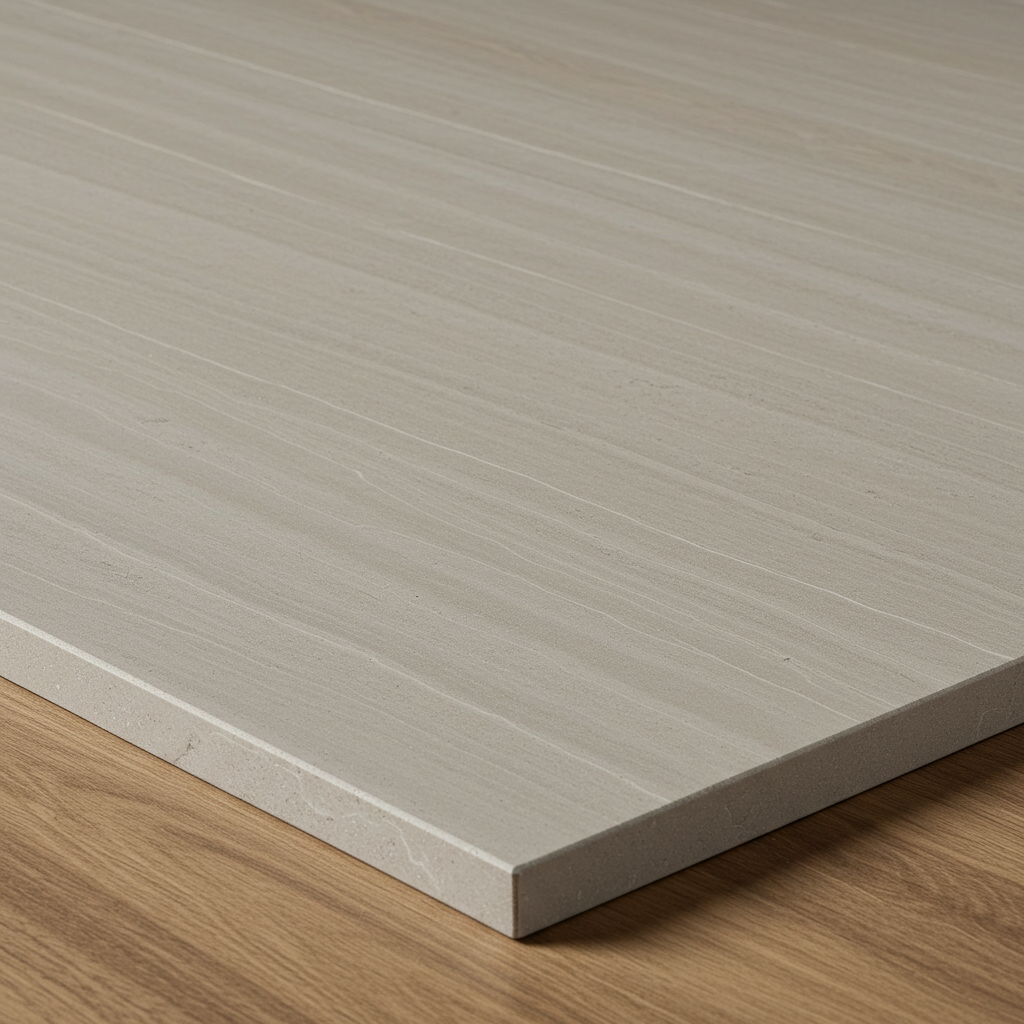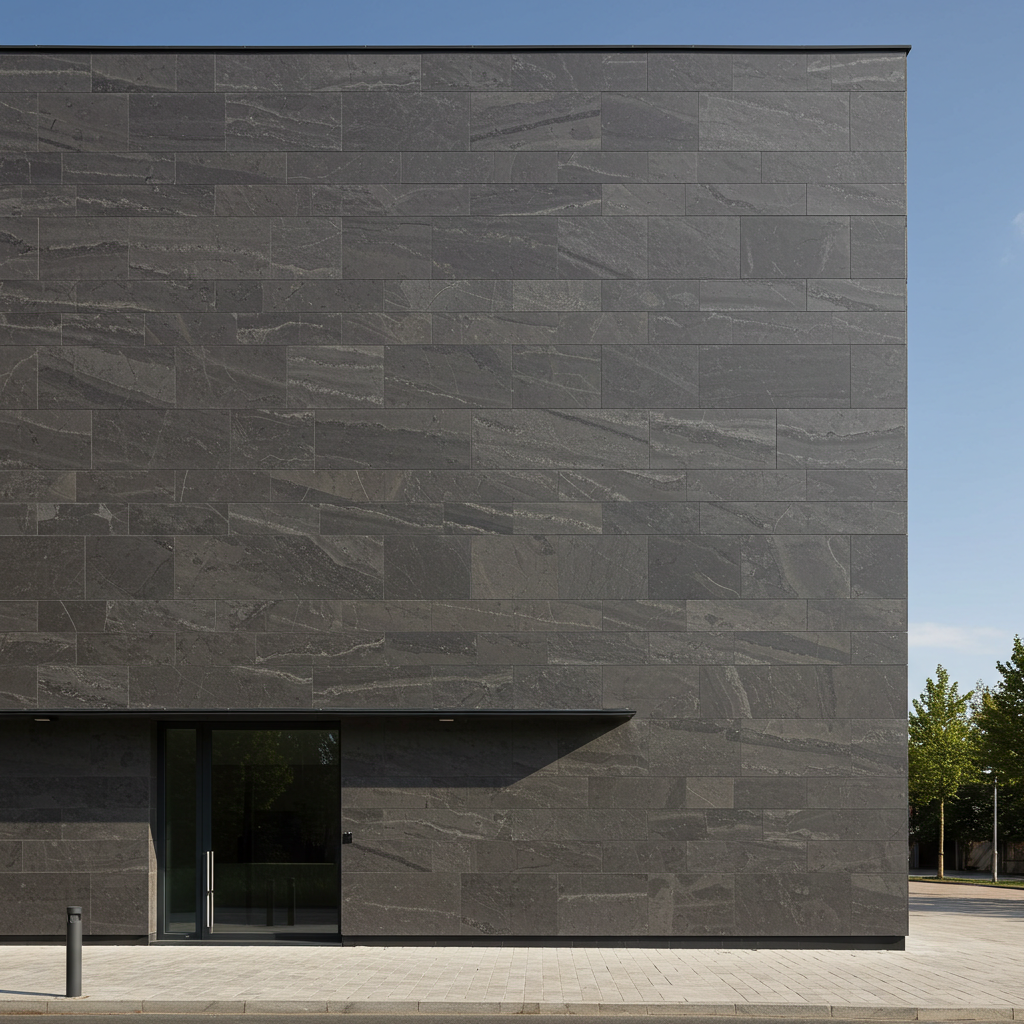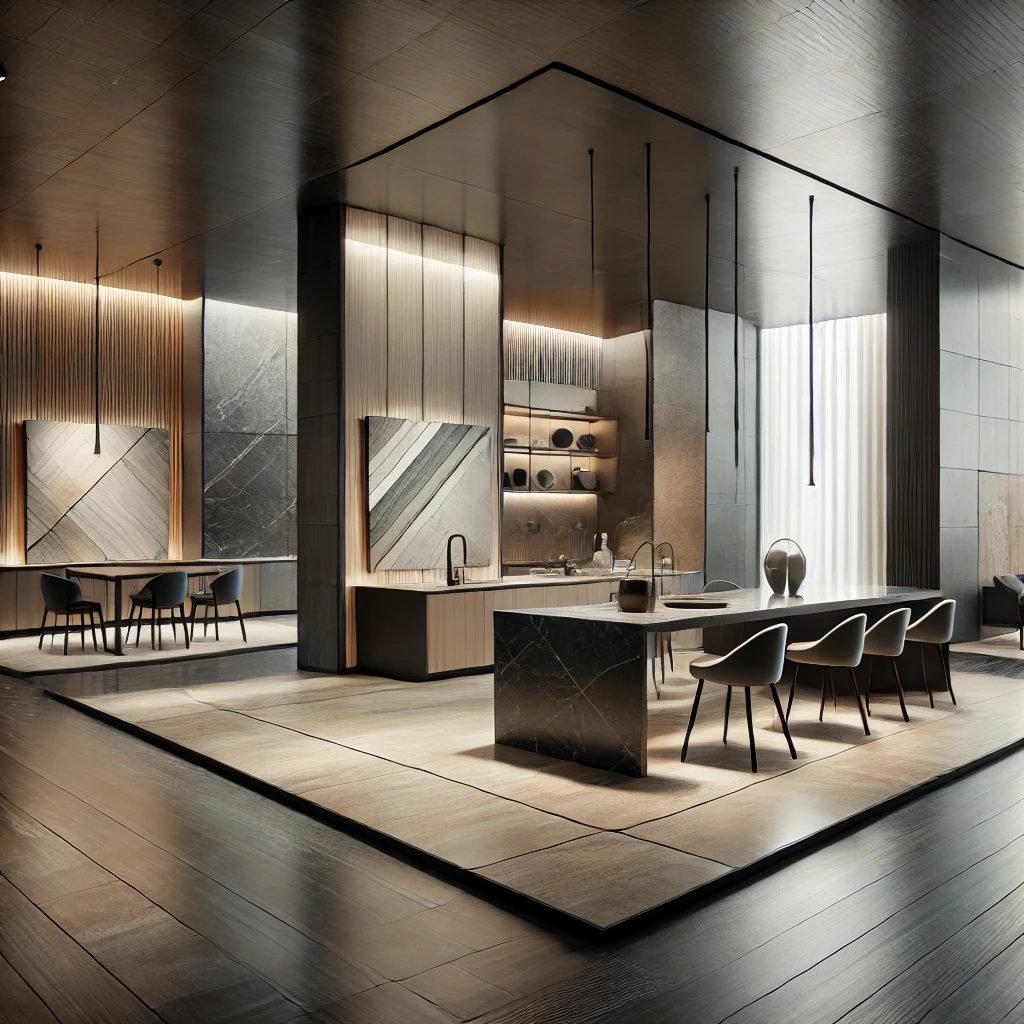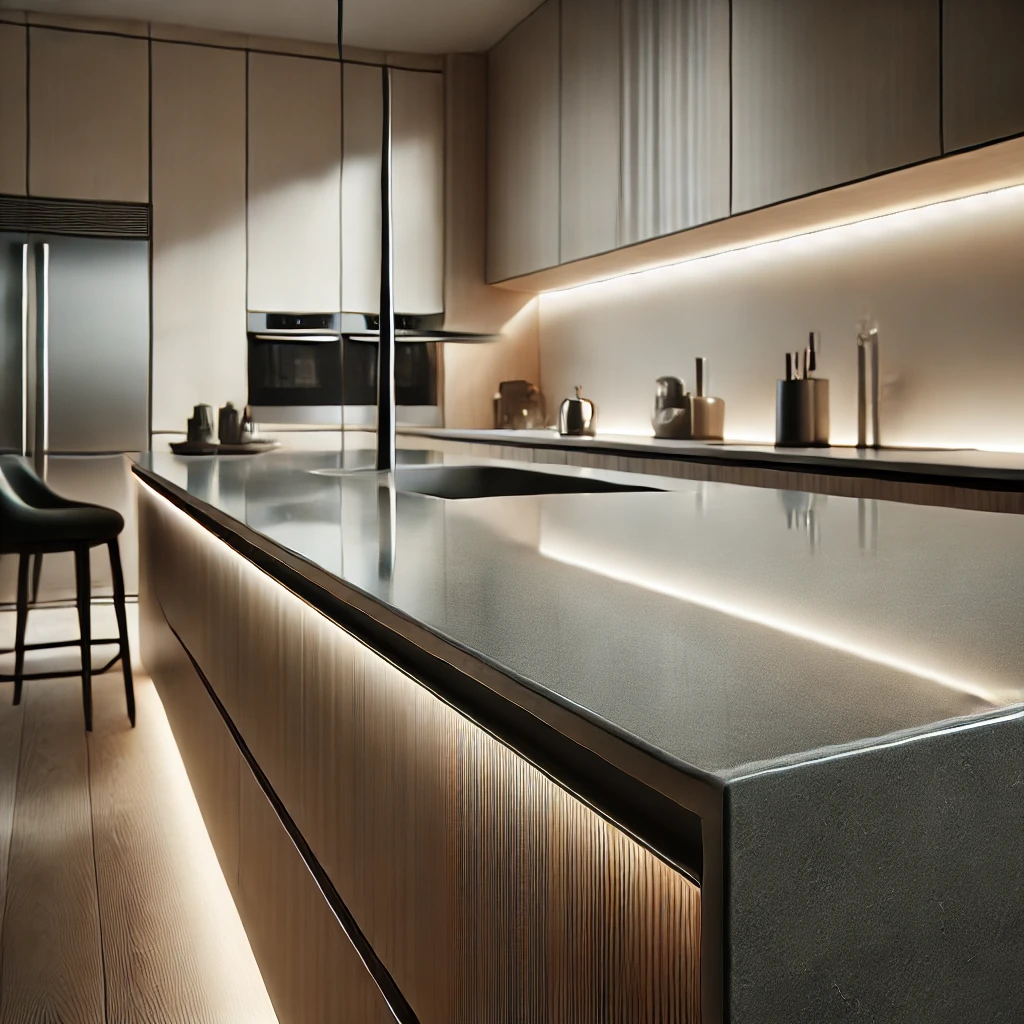Laminam is a revolutionary material that has transformed the world of surface design and architecture. As an innovative, high-performance ceramic, it offers unique properties that make it ideal for a wide range of applications, from countertops and flooring to facades and furniture. In this article, we will explore the various aspects of Laminam, including what it is, how it is made, where to purchase it, who it is suitable for, how to clean it, customer reviews, and its significance in the American market.
What is Laminam?
Laminam is a brand that produces large-format, thin ceramic slabs made from high-quality raw materials. These slabs are renowned for their remarkable strength, durability, and aesthetic appeal. The material is primarily used in interior and exterior design applications such as countertops, wall cladding, flooring, and facades. What sets Laminam apart from traditional ceramics is its advanced manufacturing process, which allows for the production of slabs that are not only lightweight but also highly resistant to scratches, heat, and stains.
The Versatility of Laminam
One of the key features of Laminam is its versatility. It comes in a wide variety of finishes, textures, and colors, offering architects and designers immense flexibility when incorporating it into their projects. Whether it’s a sleek, modern kitchen countertop, a textured bathroom wall, or a striking building facade, Laminam’s variety ensures there is a solution for almost every need.
Laminam Color Gallery

How is Laminam Made?
Laminam is made using a sophisticated manufacturing process that involves combining natural raw materials like clay, kaolin, feldspar, and silica. These materials are mixed and compressed under high pressure to create a highly compact surface. The slabs are then subjected to high-temperature firing in kilns, which ensures their strength and durability.
Key Steps in the Production Process:
Material Selection: The first step in making Laminam is choosing the finest natural raw materials. These materials must meet stringent quality standards to ensure the final product has the required strength, resilience, and aesthetic quality.
Mixing and Forming: The raw materials are mixed together to form a paste, which is then spread into large, thin sheets. These sheets are pressed under high pressure to achieve their final thickness and uniformity.
Firing: The slabs are then fired at extremely high temperatures in kilns, which hardens the material and gives it its signature durability. The firing process also allows the colors and textures to develop.
Finishing Touches: Once the slabs are fired, they undergo polishing or texturing, depending on the desired finish. This step can enhance the material’s aesthetic appeal and give it a glossy or matte surface.
Where to Buy Laminam
Laminam is available for purchase through authorized distributors, retailers, and showrooms worldwide. In the United States, there are numerous locations where you can find Laminam products. These stores often offer a range of slabs, as well as assistance with selecting the right product for your project.
Purchasing Online vs. In-Store
While you can visit showrooms to see and touch the materials in person, many customers prefer the convenience of purchasing Laminam online. Authorized websites and distributors allow for easy browsing of the available designs, sizes, and finishes. Additionally, some online stores provide detailed product specifications and customer support to help guide your decision-making process.
Who is Laminam Suitable For?
Laminam is suitable for a variety of customers, from homeowners looking for high-end design elements to large-scale commercial projects requiring durable and versatile materials. Here’s a breakdown of who can benefit from using Laminam:

1. Homeowners
Laminam is an excellent choice for homeowners looking to create beautiful, durable, and easy-to-maintain surfaces in kitchens, bathrooms, and living spaces. The large-format slabs are perfect for creating seamless designs, and the material’s resistance to heat and stains makes it ideal for use in high-traffic areas.
2. Architects and Designers
For architects and designers, Laminam provides a wealth of design possibilities. The wide variety of colors, finishes, and textures available allows for creative expression while maintaining functional integrity. Additionally, the material’s lightweight nature makes it easier to work with compared to traditional heavy stone surfaces.

3. Contractors and Builders
Contractors and builders often turn to Laminam for its ease of installation and durability. The large-format slabs reduce the number of seams in installations, making the process quicker and more efficient. Moreover, Laminam’s strength ensures that it can withstand the rigors of heavy use in commercial settings, making it an excellent choice for floors and facades.

How to Clean Laminam
Laminam’s surface is highly resistant to stains, scratches, and other forms of wear and tear, but it’s still important to maintain it properly to ensure its longevity. Here’s a simple guide to cleaning and maintaining your Laminam surfaces:
Basic Cleaning Tips:
Regular Cleaning: Use a soft cloth or sponge with mild detergent and warm water to wipe down your Laminam surfaces. Avoid abrasive cleaners or scouring pads that may scratch the surface.
Tackling Stubborn Stains: For tougher stains, a mixture of water and vinegar or a pH-neutral cleaner can be applied. Avoid using harsh chemicals, as they may damage the surface.
Daily Care: To maintain the glossy finish of Laminam, simply wipe the surface with a damp microfiber cloth. This prevents dirt and grease from building up over time.
Additional Maintenance Tips:
- Preventing Scratches: Although Laminam is resistant to scratches, placing protective mats or pads under heavy items can help preserve its surface.
- Avoiding Heat Damage: While Laminam can withstand heat, it’s always best to use trivets or hot pads when placing hot pots or pans on the surface.
Customer Reviews
Laminam has received widespread acclaim for its aesthetic appeal, durability, and ease of maintenance. Many customers have praised the product for its modern look and versatility. Architects and designers, in particular, appreciate the wide range of design options available, allowing them to create customized, high-end spaces.
Notable Positive Reviews:
Homeowners: Customers love how easy Laminam is to maintain and how it enhances the overall look of their homes. One customer mentioned, “Laminam transformed my kitchen into a beautiful and functional space. The surfaces are not only visually stunning but also resistant to scratches and stains, which makes it perfect for daily use.”
Architects and Designers: Many professionals have lauded Laminam for its adaptability in different design environments. A renowned architect stated, “Laminam provides the flexibility to push the boundaries of design while maintaining functionality. It’s my go-to material for high-end projects.”
Frequently Asked Questions
1. How durable is Laminam compared to traditional tiles?
Laminam is more durable than traditional ceramic tiles due to its dense, compact structure. It is resistant to scratches, stains, and heat, making it an excellent choice for high-traffic areas.
2. Can Laminam be used for exterior applications?
Yes, Laminam is suitable for both interior and exterior applications. It is highly resistant to weather conditions, making it ideal for facades and outdoor installations.
3. Is Laminam a sustainable material?
Laminam is made from natural materials and is produced with energy-efficient techniques. Additionally, its long lifespan and resistance to wear and tear reduce the need for frequent replacements, contributing to sustainability.
4. What are the most common applications for Laminam?
Laminam is commonly used for countertops, flooring, wall cladding, facades, and even furniture. Its versatility allows it to be used in a wide range of design settings, both residential and commercial.

The Importance of Laminam in the United States
In recent years, Laminam has gained significant popularity in the United States, especially among high-end residential and commercial projects. Its combination of durability, aesthetic flexibility, and ease of maintenance has made it a top choice for architects, designers, and homeowners. The American market has embraced Laminam as a leading option for countertops, facades, and flooring, with numerous distributors and showrooms across the country offering access to this innovative material.
Laminam’s Growing Popularity in the U.S.
As the demand for sustainable, high-performance materials grows, Laminam has positioned itself as a leader in the industry. Many American architects and designers have incorporated Laminam into their projects, citing its high quality and versatile design options. The brand’s presence in the U.S. continues to expand as more people recognize the benefits of using Laminam in both residential and commercial applications.
Conclusion
Laminam is more than just a surface material; it’s a game-changer in the world of design and architecture. Its innovative production process, exceptional durability, and wide range of finishes make it a top choice for homeowners, architects, designers, and builders alike. Whether you’re looking to create a modern kitchen countertop, a striking building facade, or a durable floor, Laminam offers the perfect solution. As its presence continues to grow in the U.S. and around the world, Laminam is undoubtedly shaping the future of surface design.


